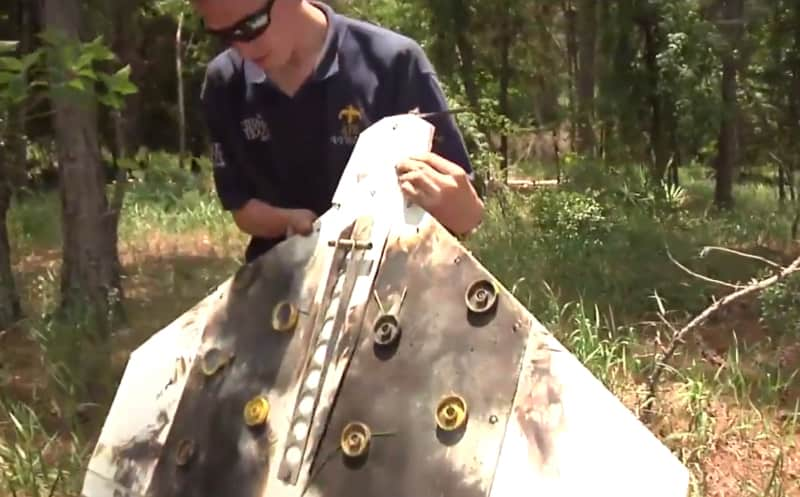The Unique Sport of “Gnat Shooting”
OutdoorHub Reporters 10.16.13

While the town of Deer Trail, Colorado is still debating whether it should hold a drone-hunting season, there is one sport that already uses similar devices for target practice. Called “gnat warfare,” the sport is perfectly legal and is much loved by shooting enthusiasts in the United Kingdom, as well as rising in popularity here in the United States.
Gnat shooting is very similar to clay-pigeon shooting, except it involves a remote-controlled vehicle with explosive charges. The sophistication of the target can vary from place to place but most “gnats” are sturdy RC planes that Gnat Shoot UK calls “a scaled down version of a Military Target Drone.” With thick wings and heavy-duty construction, each gnat is designed to be used multiple times.
At the beginning of a match the device is loaded with 10 or so explosive charges, or “flash pods,” on its underside and launched from a catapult. The gnat will then make passes over a team of five or more shooters, who will attempt to down the craft with birdshot. Hitting several of the explosive charges at once will be sufficient to knock the drone out of the air but otherwise teams are scored by how many charges they have shot. The goal of the gnat operator is to keep the craft from being hit at all, so gnat shooters can expect wild aerial maneuvers and surprises.
“Each flight consists of five shooters, which make up a team. Each team gets five passes and every shooter gets two shots per pass,” Gnat USA’s Chris Ryan explained to OutdoorHub. “In other words, a team gets 50 shots to explode 10 pods on the bottom of the aircraft. I can tell you, we have more planes shot down than we have perfect scores.”
Downed planes also count as a perfect 10, but these fast-flying targets will make shooters earn their hits. Well-built gnats can achieve speeds greater than 80 miles per hour and are capable of making turns on a dime. Their corrugated-plastic construction allows the drones to take a shot and keep on flying. Ryan said that controlled crashes usually leave the gnat intact, and they are generally repaired within 30 minutes. The wings of the drone receive the most damage and after 10 flights they are usually pitted with birdshot holes, at which point they are replaced with new ones.
“At that point there’s so many holes in ’em that they’re falling apart,” Ryan said.
Clay shooters may find that gnats are a bit more of a challenge, and also may require more of a lead. Unlike traditional clays, gnats maintain consistent speed, if not direction.
You can watch a video of gnat shooting below.
So while residents of Deer Trail may never get their chance to take aim at a reconnaissance drone, they can still target practice on a few gnats.
Hat tip to guns.com.

